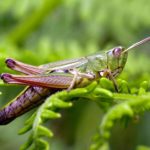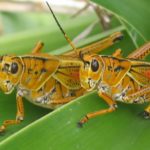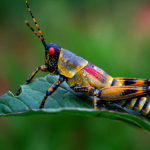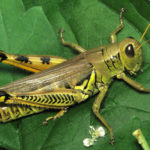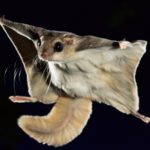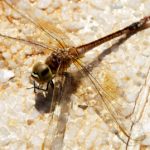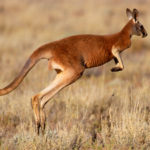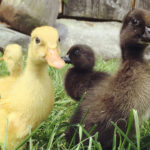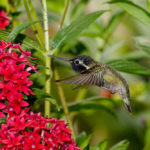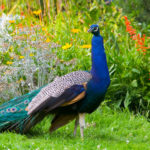Grasshoppers – information
 The grasshoppers are cautious, at the noise of footsteps they stop chattering and freeze in immobility. If the enemy is approaching then the grasshopper is saved by fast and long jumps. He pushes back with his hind legs and can jump to a distance of 1-2 meters. In addition, a number of species combine jumping with flying, during the jump the grasshopper opens its wings and flies a short distance, but grasshoppers never use the flight as an independent means of transportation. However, some species use active protective equipment. For example, a peacock grasshopper, discovered recently in the forests of Guyana, demonstrates to the enemy its bright wings with eyes, and a spiked-headed grasshopper stands in a fighting stance, in which he is very similar to a spider.
The grasshoppers are cautious, at the noise of footsteps they stop chattering and freeze in immobility. If the enemy is approaching then the grasshopper is saved by fast and long jumps. He pushes back with his hind legs and can jump to a distance of 1-2 meters. In addition, a number of species combine jumping with flying, during the jump the grasshopper opens its wings and flies a short distance, but grasshoppers never use the flight as an independent means of transportation. However, some species use active protective equipment. For example, a peacock grasshopper, discovered recently in the forests of Guyana, demonstrates to the enemy its bright wings with eyes, and a spiked-headed grasshopper stands in a fighting stance, in which he is very similar to a spider.
Among grasshoppers there are both herbivorous and predatory species. Herbivorous grasshoppers eat green parts of plants (mainly grass and leaves), predatory catch small insects, butterflies and even their own kind. An adult grasshopper does not need to eat a larva of its kind. Some types of grasshoppers are omnivorous and combine at once two types of food. Grasshoppers eat a lot, but in voracity are much inferior to locusts.
Reproduction in tropical species is not confined to a certain season, the temperate zone species begin to breed in May-June. The male attracts females by chirring, as well as … sperm, packed in a very special way. Males produce sperm in the form of packages – spermatophores, which consist of two parts. One part is the actual sperm, the second is a sticky nutrient. The female, receiving from the male spermatophore, first eats the sticky part, and the sperm then flows into her abdomen. This dinner can last up to 15 hours, if the female will eat the first part too quickly, then the sperm will not have time to flow and fertilization will not take place. Thus, males attract females not only with songs, but also with large spermatophores, which increases their chance of reproduction. The exception is the steppe dyke, in these grasshoppers the females lay eggs without fertilization (parthenogenesis), the males do not have this species at all.
Females lay large eggs of oval-flattened form of white, black, brown. Some species of grasshoppers lay eggs on twigs and blades of grass in a line, others attach them to the edges of leaves, creating a peculiar edging, the third with the help of the ovipositor lay eggs directly in the soil or in the tissues of plants.
